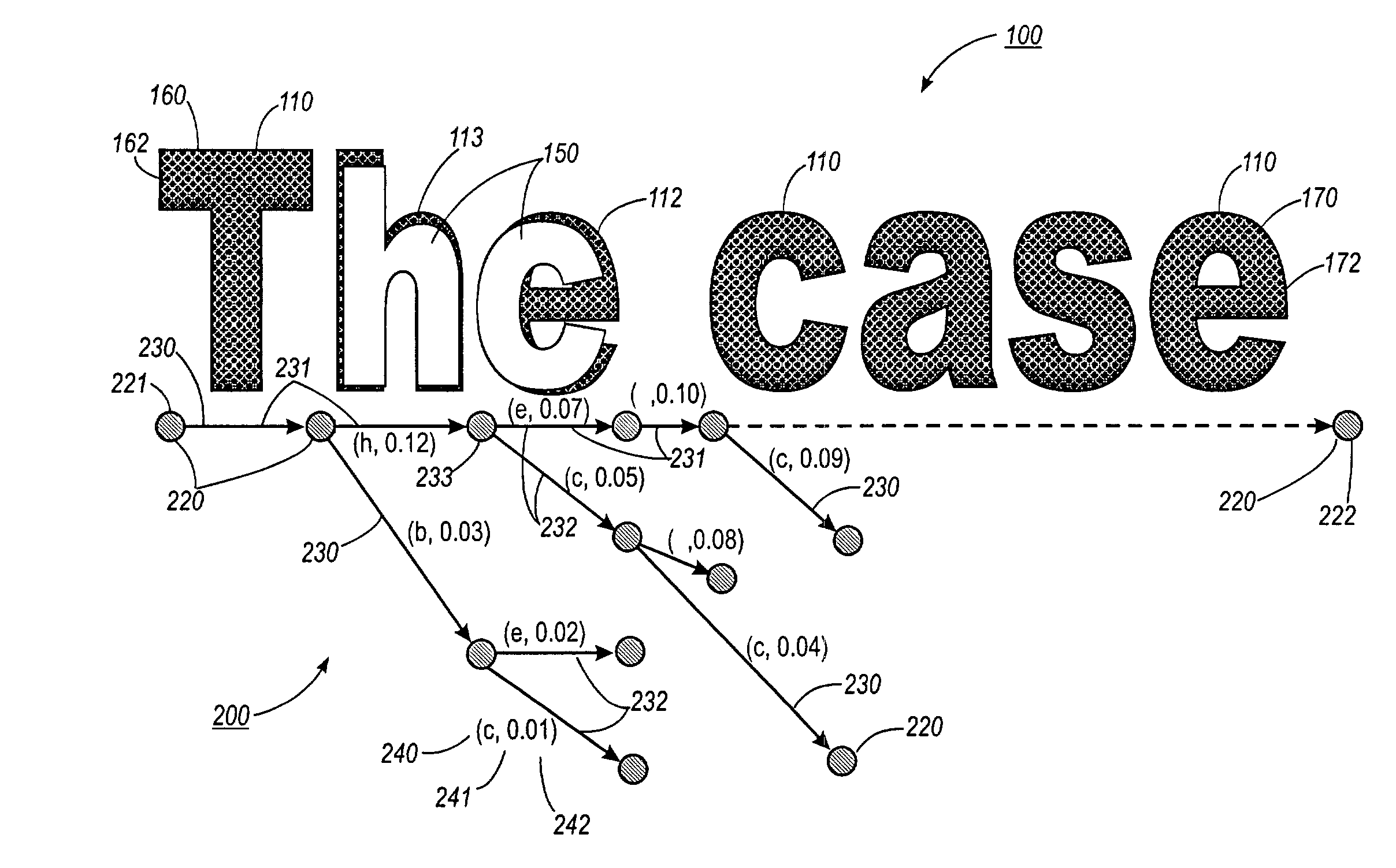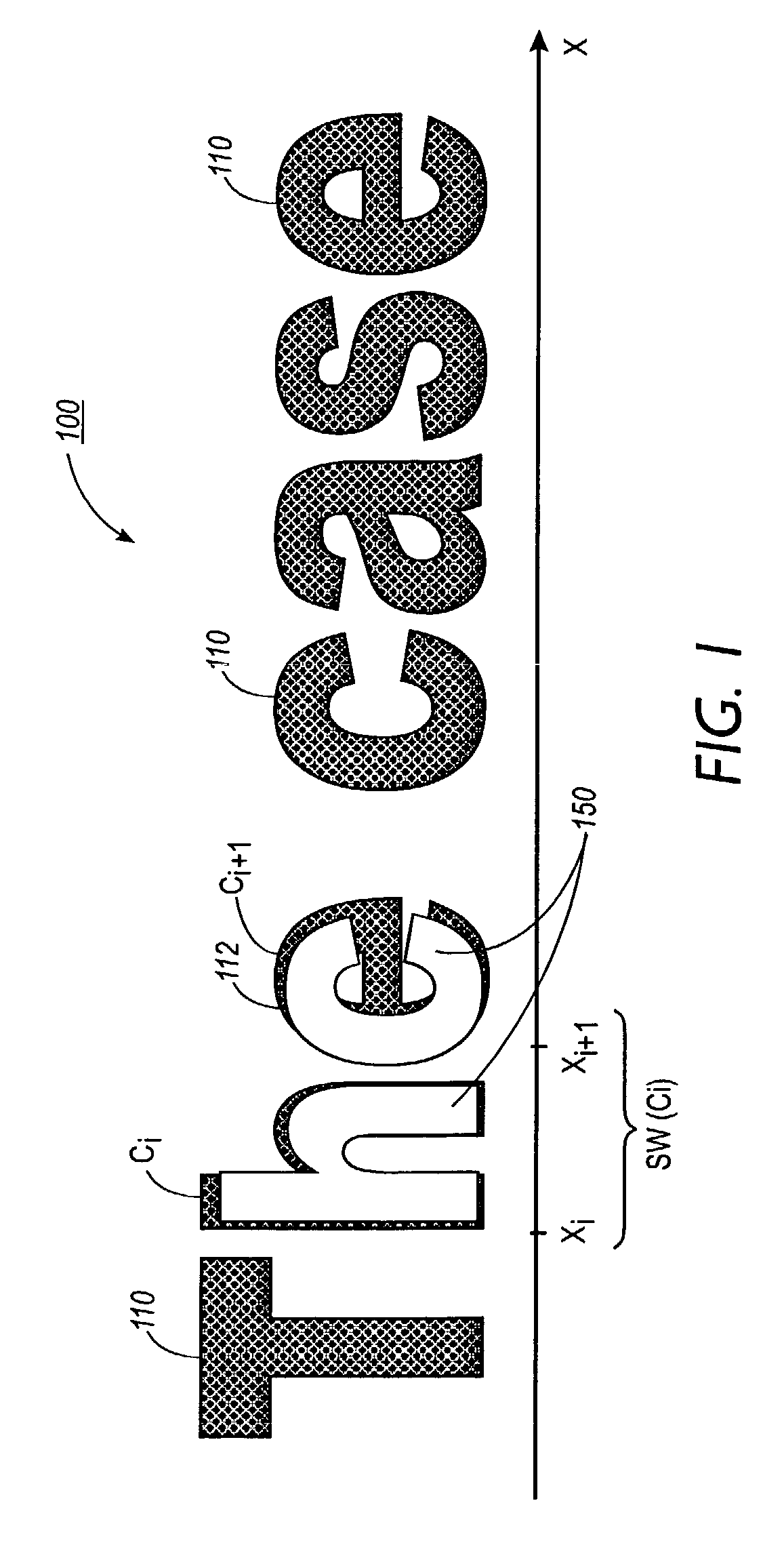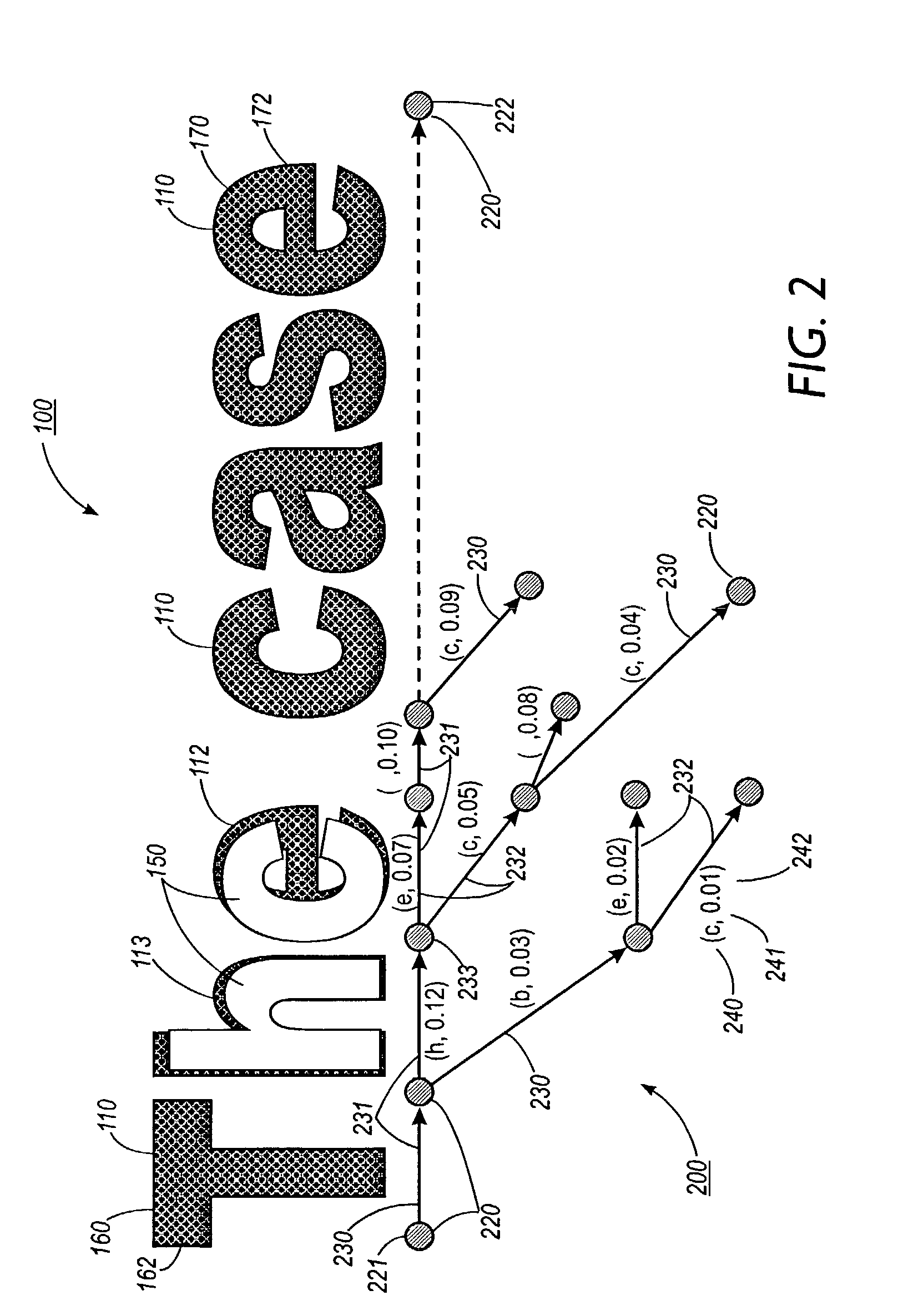Document image decoding systems and methods using modified stack algorithm
a document image and stack algorithm technology, applied in the field of methods and systems for document image decoding, can solve the problems of large decoding space, difficult to incorporate a language model into document image decoding, and difficult to perform decoding with methods such as the viterbi algorithm, so as to improve the quality of document image decoding and encourage convergen
- Summary
- Abstract
- Description
- Claims
- Application Information
AI Technical Summary
Benefits of technology
Problems solved by technology
Method used
Image
Examples
Embodiment Construction
[0049]Document image decoding (DID) takes a communication systems approach to optical character recognition (OCR). When a language model is incorporated, a document image decoding process considers both a template matching and a linguistic likelihood when decoding a character in a received document image.
[0050]Regarding the linguistic likelihood, an original message N=c1, c2, C3, . . . , with statistical properties given by language model L, is “transmitted” on a channel. In a dth-order language model Ld, each character is given a probability based on a context of size d. For example, in various exemplary embodiments, a current character is given a probability based on a context of the d characters appearing immediately prior to the current character.
[0051]FIG. 1 illustrates one exemplary embodiment of a document image decoding framework when applied to a text fragment 100. As shown in FIG. 1, a document image of the text fragment 100 comprises a plurality of characters 110, i.e., t...
PUM
 Login to View More
Login to View More Abstract
Description
Claims
Application Information
 Login to View More
Login to View More - R&D
- Intellectual Property
- Life Sciences
- Materials
- Tech Scout
- Unparalleled Data Quality
- Higher Quality Content
- 60% Fewer Hallucinations
Browse by: Latest US Patents, China's latest patents, Technical Efficacy Thesaurus, Application Domain, Technology Topic, Popular Technical Reports.
© 2025 PatSnap. All rights reserved.Legal|Privacy policy|Modern Slavery Act Transparency Statement|Sitemap|About US| Contact US: help@patsnap.com



